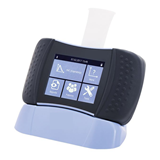Key Takeaways
- Update your HR policies: Ensure your practice complies with recent and upcoming changes to the Fair Work Act 2009, including wage-theft laws, casual conversion, and employee rights reforms.
- Audit your policies: Review recruitment, classification, pay, contractor status, and after-hours arrangements to protect your medical practice from criminal and civil penalties.
- Communicate staff rights clearly: Educate your team on new entitlements, such as the right to disconnect and increased superannuation, to maintain trust, reduce unrest, and avoid compliance gaps.
- Understand the cost of non-compliance: Failing to update HR policies can result in criminal and civil penalties, Fair Work audits, and serious reputational damage for your practice.
- Leverage trusted HR tools and resources: Use platforms like PACT, AHRI updates, and industry association templates to ensure your policies are compliant, practical, and tailored to Australian medical practices.
Introduction: The healthcare HR landscape in flux
In 2025, Australian medical practices are operating in an HR environment undergoing sweeping change. Recent amendments to workplace laws, including those introduced by the Closure of Loopholes reforms, have expanded employer obligations, increased penalties for underpayments, and introduced new employee rights. For medical industry decision-makers, this means HR policies and employment practices that may have worked yesterday are no longer enough. Ensuring your policies align with the current legal framework isn’t optional, it’s essential to protect your practice, your staff and your patients.
Why the changes matter to medical practices
While many changes apply to all businesses, those in healthcare face particular risks:
- Wage theft laws now treat intentional underpayment of wages, allowances and superannuation as criminal offences from 1 January 2025.
- Casual conversion pathways and revised definitions of casual employment are changing how you classify and manage staff.
- The right to disconnect is extending to small practices, impacting after-hours communications and rostering protocols.
For a medical practice, these reforms affect multiple roles, from front-desk staff and part-time clinicians to allied health professionals and contractors. A misstep can result not only in regulatory action but also disruption to patient care, staff morale and reputation.
Assessing your current HR policies: key focus areas
1. Employment classifications and casual conversion
- Review how your practice defines “casual” vs “permanent” roles. The new legislation shifts focus on the nature of the employment relationship, not just the contract’s wording.
- Ensure you’re ready to meet conversion requests from eligible casuals after 12 months of regular work.
- Check contractor agreements. The boundary between “employee-like” workers and contractors has tightened.
2. Pay, allowances, superannuation and minimum standards
- As of 1 July 2025, the National Minimum Wage rose to $24.95/hr and Modern Award minimums increased.
- The Superannuation Guarantee rate rose to 12%, so total remuneration structures may need rethinking.
- Policies must allow for full entitlement payments: underpayments can now trigger civil and criminal penalties.
3. Right to disconnect, after-hours communication and fatigue management
- From 26 August 2025, small business practices (under 15 employees) must respect employees’ right to refuse work contact outside hours unless unreasonable.
- In a medical setting, this might impact on-call expectations, remote access to systems, and shift communications. Update your policy accordingly.
4. Contractor and labour-hire worker compliance
- New rules under the Closing Loopholes reforms mean labour hire and dependent contractors require careful management.
- Medical practices using locum agencies or subcontracted professionals must check that their arrangements meet the new definitions and standards.
Updating your policies: A practical action plan
- Policy audit checklist:
- Employment contracts: adjust classifications, hours, conversion rights.
- Pay and supervision practices: ensure systems reflect new wage and SG rates.
- After-hours communications: draft or update a “right to disconnect” policy.
- Contractor/agency arrangements: review based on latest definitions.
- Leave and scheduling policies: align with expanded rights (eg. domestic violence leave, flexible work).
- Staff communication and training:
- Hold briefing sessions for managers and staff explaining key changes.
- Distribute a summary overview of all updated policies, focus on clarity, not legal jargon.
- Update your employee handbook or intranet and ensure acknowledgement forms are collected.
- Systems and compliance tracking:
- Update payroll systems immediately to reflect new minimum wages and SG.
- Use an HRIS or tracking log to ensure all policies are signed off and version-controlled.
- Schedule regular reviews (at least annually) to catch further legislative changes.
Case study: A NSW GP practice gets compliant
A mid-sized GP clinic in Sydney with 25 full-time and part-time staff discovered that:
- Their casual front-desk staff didn’t have conversion pathways outlined, even though many had worked regular hours for over 12 months.
- Their after-hours clinician email policy lacked formal right-to-disconnect protections.
- Their payroll system hadn’t adjusted to 2025 SG rate changes.
After engaging an employment-law consultant, the clinic: - Updated all employment contracts and implemented casual conversion processes.
- Introduced a formal “after-hours communication” policy and training for managers.
- Upgraded their payroll system to reflect 12% super guarantee and new minimum wages.
- Result: Within six months, the clinic passed its independent HR audit, avoided a potential penalty for contractor misclassification, and reported improved staff morale and clarity in HR processes.
Future-proofing your HR for the medical sector
- Expect further reform: Many HR experts suggest 2025 will focus on implementation, but further changes remain likely.
- Monitor enterprise bargaining and award reviews in healthcare sectors, rate increases and classification changes may still emerge.
- Consider embedding quarterly HR reviews and maintaining legal-advisor relationships to manage risk proactively.
The cost of non-compliance
Failing to bring your HR policies in line with the latest Fair Work changes can expose your practice to serious financial, legal, and reputational risks. The updated wage theft and employee entitlement rules mean regulators are taking a much harder line on compliance.
If your practice is found in breach, the consequences could include:
- Criminal penalties for wage theft , including potential jail time for directors and practice owners.
- Civil penalties of up to $469,500 for companies under serious contraventions.
- Fair Work audits and potential public naming for repeat offenders, damaging credibility within your professional networks.
- Reputational harm that can impact patient trust, recruitment, and partnerships.
Beyond the fines, non-compliance can also stall business growth. Losing time and resources to investigations or remediation can disrupt patient care and operations , especially in smaller or privately run practices.
Tools and resources for HR managers
Staying compliant doesn’t have to be overwhelming. Several trusted Australian tools and bodies provide reliable updates, templates, and practical support to help streamline policy reviews and align with Fair Work requirements.
Here are a few valuable resources to bookmark:
- Fair Work Ombudsman Pay and Conditions Tool (PACT) – Check award rates, leave entitlements, and penalty rates for different roles.
- Australian HR Institute (AHRI) – Access up-to-date compliance alerts and HR best practice resources.
- Business.gov.au – HR policy templates – Free templates for workplace policies, contracts, and procedures.
- Industry associations such as the RACGP, AMA and AAPM – Provide sector-specific HR templates, webinars, and advisory notes for medical practices.
Conclusion
For medical practices, preparing your HR policies for the new era of Fair Work reforms isn’t optional, it’s critical. From updated wage rates to casual conversion, right to disconnect, and contractor compliance, you must align your workforce practices with the shifting legal landscape. With an audit-based approach, clear communication, and robust systems, you can protect your practice, empower your staff, and focus on delivering patient care, secure in the knowledge that your HR foundation is built for today and tomorrow.




